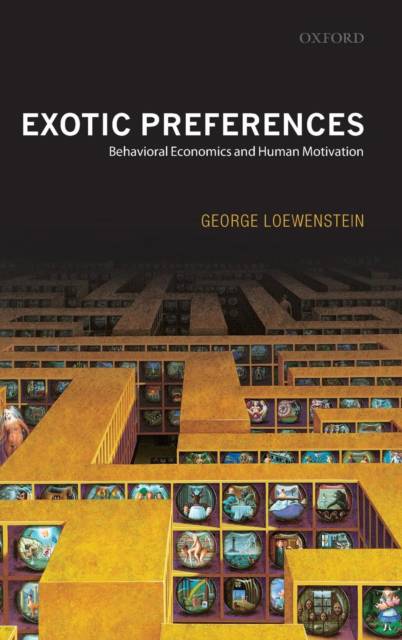
- Afhalen na 1 uur in een winkel met voorraad
- Gratis thuislevering in België vanaf € 30
- Ruim aanbod met 7 miljoen producten
- Afhalen na 1 uur in een winkel met voorraad
- Gratis thuislevering in België vanaf € 30
- Ruim aanbod met 7 miljoen producten
Zoeken
€ 233,95
+ 467 punten
Omschrijving
George Loewenstein is one of the pioneers of the rapidly growing field of behavioral economics. For over twenty years he has been working at the intersection of economics and psychology and is one of the few people of whom it can be said that their work is equally respected and well known within both disciplines. This book brings together a selection of his papers focusing on what he calls "exotic preferences"--the disparate motives that drive human behavior. In addition to covering the history and methodology of behavioral economics, they also touch on a wide range of fascinating topics such as the motives that drive extreme athletes, our propensity to want to get unpleasant experiences out of the way so we can focus on the more pleasant, and the psychology of curiosity. There are also papers on social preferences, discussing the importance of perceptions of fairness in interpersonal interactions, intertemporal choice--the tradeoffs between costs and benefits occurring at different points in time--and the impact of emotion on economic decision making. An original introduction outlines Loewenstein's general approach to research, and there are short introductions to each paper outlining briefly when, how and why they came to be written, providing a fascinating and vivid insight into the process of intellectual creativity.
Specificaties
Betrokkenen
- Auteur(s):
- Uitgeverij:
Inhoud
- Aantal bladzijden:
- 688
- Taal:
- Engels
Eigenschappen
- Productcode (EAN):
- 9780199257072
- Verschijningsdatum:
- 20/09/2007
- Uitvoering:
- Hardcover
- Formaat:
- Ongenaaid / garenloos gebonden
- Afmetingen:
- 166 mm x 240 mm
- Gewicht:
- 1174 g

Alleen bij Standaard Boekhandel
+ 467 punten op je klantenkaart van Standaard Boekhandel
Beoordelingen
We publiceren alleen reviews die voldoen aan de voorwaarden voor reviews. Bekijk onze voorwaarden voor reviews.








